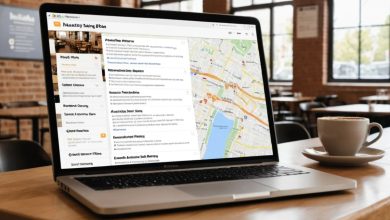Professional Networking Strategies to Grow Your Career
Building a robust professional network is one of the most effective ways to accelerate career growth. By connecting with the right people, sharing knowledge, and nurturing relationships over time, you can unlock new employment opportunities, gain industry insights, and establish a personal brand that sets you apart. In this article, you will discover proven professional networking strategies—both online and offline—that help you achieve clear goals, strengthen your reputation, and ultimately propel your career forward.
Understanding Professional Networking
What Are Professional Networking Strategies?
Professional networking strategies are deliberate approaches designed to help individuals connect, engage, and build lasting relationships within their industry or field. These strategies include:
-
Attending industry events to meet peers, mentors, and influencers.
-
Leveraging online platforms like LinkedIn or niche forums for ongoing engagement.
-
Crafting a personal brand that highlights your expertise and attracts like-minded professionals.
-
Following up consistently to turn initial contacts into meaningful connections.
-
Offering value first through sharing resources, insights, or introductions.
Why Professional Networking Matters for Career Growth
Networking opens doors in ways that applications and resumes alone cannot. According to recent data, roughly 70 percent of job seekers secure positions through some form of networking—either direct referrals or industry connections. By actively building relationships, you gain:
-
Access to unadvertised job opportunities: Many roles are filled through word of mouth before ever appearing on job boards.
-
Mentorship and guidance: Seasoned professionals can provide feedback, offer advice on career moves, and advocate for you.
-
Industry knowledge: Conversations with peers keep you current on trends, technologies, and best practices.
-
Enhanced reputation: When people know you as a reliable and knowledgeable professional, they are more likely to think of you when opportunities arise.
Identifying Your Networking Goals
Networking without a clear purpose often leads to superficial connections that fade quickly. Define SMART (Specific, Measurable, Achievable, Relevant, Time-bound) objectives such as:
-
Goal example 1: Schedule three informational interviews with mid-level managers in my field within the next six weeks.
-
Goal example 2: Gain five new qualified LinkedIn connections who work at target companies by the end of the quarter.
-
Goal example 3: Secure a mentor through my alumni network before year’s end.
Use this checklist to clarify your objectives:
-
Determine your career aspirations (e.g., promotion, new role, skill development).
-
Identify the types of people who can help (e.g., hiring managers, industry experts, recruiters).
-
Set a timeline for when you want to achieve each milestone.
-
Outline desired outcomes (e.g., number of new contacts, informational interviews, mentorship relationships).
Building a Strong Personal Brand
Crafting an Engaging Elevator Pitch
An elevator pitch is a concise, compelling summary of who you are and what makes you unique. To build an effective pitch, follow these steps:
-
Define your role or expertise: “I’m a digital marketing specialist focusing on SaaS companies.”
-
Highlight a key achievement or skill: “I increased organic traffic by 80 percent in six months for my current employer.”
-
State your career objective: “I’m seeking opportunities to lead growth marketing initiatives in high-growth tech startups.”
-
Add a call to action or question: “I’d love to learn about your experiences scaling customer acquisition at your company.”
Example elevator pitch:
“Hi, I’m Sarah Ramirez, a digital marketing specialist with a track record of boosting organic traffic by 80 percent within half a year. I’m passionate about helping SaaS businesses scale through data-driven campaigns. What strategies have you found most effective for growth in your organization?”
Optimizing Your LinkedIn Profile
LinkedIn remains the cornerstone of online professional networking. Optimize key sections with relevant keywords—such as “professional networking strategies,” “career networking tips,” and “networking for career advancement”—to improve search visibility.
-
Headline & Summary
-
Write a headline that combines your role and value proposition, for example: “Senior UX Designer | Specializing in User-Centered Interfaces & Accessibility.”
-
In the Summary section, open with a strong hook: “A passionate UX designer who transforms complex requirements into intuitive experiences that delight users.” Use bullet points to showcase top skills, notable achievements, and career aspirations.
-
-
Professional Photo & Background Image
-
Use a high-quality headshot with a neutral background and professional attire.
-
Choose a background image that reflects your industry or personal brand—perhaps a stylized image of code snippets for developers or a professional workspace for consultants.
-
-
Experience & Skills
-
Under each role, include brief descriptions of responsibilities, followed by quantifiable accomplishments (e.g., “Led a cross-functional team of five to redesign the company’s website, resulting in a 25 percent reduction in bounce rate”).
-
List relevant skills—prioritize those that align with your target roles—and request endorsements from colleagues to increase credibility.
-
-
Recommendations & Multimedia
-
Encourage peers, managers, or clients to write LinkedIn recommendations that highlight your strengths and work ethic.
-
Attach examples of past work—a portfolio PDF, slide deck, or video demonstration—to visually reinforce your expertise.
-
Developing Thought Leadership Content
Publishing thought leadership content establishes you as an authority and encourages meaningful engagement.
-
Types of Content
-
Articles: In-depth pieces addressing industry challenges, case studies, or best practices.
-
Short Posts: Quick insights, links to relevant articles, or brief commentary on trending topics.
-
Videos/Webinars: Recorded presentations, tutorials, or panel discussions.
-
-
Creating a 300-Word Article
-
Choose a focused topic: For instance, “3 Emerging UX Trends to Watch in 2025.”
-
Craft a compelling introduction that states the problem or trend.
-
Develop two to three supporting points (e.g., micro-interactions, dark mode design, AI-driven personalization).
-
Conclude with actionable takeaways, such as “Start A/B testing micro-animations on your landing pages this quarter.”
-
-
Consistent Posting Schedule
-
Aim to post at least once every one to two weeks.
-
Share insights from conferences you attend, personal experiences solving a complex problem, or lessons learned on the job.
-
Engage with others by commenting on peers’ posts—it encourages reciprocity and increases your visibility.
-
Leveraging Online Networking Platforms
LinkedIn Strategies for Deepening Connections
LinkedIn is more than a static resume; it’s a living ecosystem where genuine engagement yields results.
-
Personalized Connection Requests
-
Research the person’s profile before reaching out. Mention a shared interest, group affiliation, or recent post:
“Hi Alex, I noticed we both follow the Product Growth Strategies group. I enjoyed your comment on agile product launches and would love to connect to exchange ideas on leveraging user feedback.”
-
-
Thoughtful Engagement
-
Comment with Insight: When you comment on a post, add real value—pose a follow-up question, share a brief related experience, or highlight additional resources.
-
Share Relevant Articles: Post articles you have written or curations from industry blogs, accompanied by your perspective.
-
Publish Long-Form Content: Use LinkedIn’s publishing platform to share in-depth articles; tag relevant connections or influencers to spark conversation.
-
-
Utilizing LinkedIn’s Features
-
LinkedIn Learning: Enroll in courses that are recognized by peers and showcase completed certificates on your profile.
-
LinkedIn Groups: Join active, moderated groups in your industry. Contribute regularly to build trust and attract connections.
-
Niche Industry Forums & Groups
Beyond LinkedIn, explore platforms where professionals convene around specific topics.
| Platform Type | Pros | Cons | Use Case |
|---|---|---|---|
| LinkedIn Groups | Broad audience, industry-specific discussions | High noise, occasional spam | Sharing content, asking targeted questions |
| Slack/Discord Hubs | Real-time chat, close-knit communities | Invite-only or limited discoverability | Technical Q&A, collaborative projects |
| Reddit Subreddits | Anonymous feedback, diverse viewpoints | Less professional tone, risk of trolling | Honest feedback, broad topic discussion |
-
LinkedIn Groups
-
Search for groups relevant to your field (e.g., “Software Engineering Best Practices,” “Financial Services Professionals”).
-
Engage by answering newcomer questions, sharing your experience, or posting original articles.
-
-
Slack/Discord Communities
-
Many tech, design, marketing, and startup communities operate on Slack or Discord. For example, “Remote UX Designers” on Slack or “Startup Founders” on Discord.
-
Participate in designated channels: “#job-opportunities,” “#portfolio-feedback,” or “#events.” These hubs enable rapid, real-time interactions.
-
-
Reddit Subreddits
-
Subreddits such as r/careerguidance, r/marketing, or r/datascience often have industry professionals discussing best practices.
-
Ask thoughtful questions (e.g., “What strategies have you used to transition from developer to product manager?”) or share case studies.
-
Personal Website & Online Portfolio
A personal website serves as a digital business card, providing a centralized place for deeper engagement.
-
Must-Have Elements
-
About Page: A concise bio that highlights your expertise, mission, and what sets you apart.
-
Projects/Portfolio Section: Visual or downloadable examples of work—case studies, presentations, code repositories, or design mockups.
-
Testimonials: Short quotes from clients, colleagues, or mentors attesting to your skills and work ethic.
-
-
Integrating a Contact Form
-
Use a straightforward contact form with fields for name, email address, company/organization, and a brief message.
-
Add a “Select a Topic” dropdown (e.g., Collaboration, Speaking Opportunity, Mentorship Inquiry) to guide responses.
-
-
Search Engine Optimization (SEO) Tips
-
Use your focus keyword “professional networking strategies” in the page title, meta description, and one or two subheadings.
-
Ensure fast load times, mobile responsiveness, and clear navigation—Google’s Page Experience signals matter.
-
Incorporate internal links to blog posts or resources that demonstrate your expertise, encouraging visitors to explore more pages.
-
Attending Events and Conferences
Researching the Right Events
Not all events yield the same networking ROI. Focus on gatherings that align with your objectives.
-
Industry Conferences: Large-scale events often feature keynote speakers, breakout sessions, and expo halls where you can meet thought leaders.
-
Local Meetups: Smaller, community-driven meetups offer more intimate settings, making introductions less intimidating. Sites like Meetup.com can help you discover relevant local groups.
-
Webinars & Virtual Summits: Cost-effective and time-efficient. Many virtual conferences include dedicated networking lounges or chat channels to connect with attendees.
Tips for Choosing:
-
Review the agenda to see if topics align with your interests.
-
Check the speaker lineup; aim to connect with at least one speaker post-session.
-
Look at attendee lists (if available) to identify decision-makers or potential mentors.
Preparing Before the Event
A strong preparation plan ensures you make the most of limited face-time with busy professionals.
-
Define Three Key People to Meet: Select speakers, panelists, or influencers whose expertise resonates with your goals.
-
Prepare Conversation Starters: Draft open-ended questions for each person—e.g., “I admire your work on X; what strategies do you recommend for someone looking to break into that area?”
-
Assemble Business Cards or Digital Portfolio Links: Ensure your business card has a clear headline, your name, and contact info. For digital portfolios, have a short URL or QR code that directs to a “speaker-ready” landing page.
Networking Best Practices During the Event
When meeting new contacts, focus on quality interactions rather than quantity.
-
Do Introduce Yourself Confidently: Offer a firm handshake (or wave for virtual events) and state your name clearly, along with a one-sentence elevator pitch.
-
Do Listen Actively: Demonstrate genuine interest by asking follow-up questions and acknowledging their insights.
-
Don’t Monopolize Conversations: Keep initial chats to around 3–5 minutes unless both parties agree to extend it.
-
Do Exchange Details: End each conversation by exchanging business cards or LinkedIn profiles. Ask, “May I connect with you on LinkedIn?” to keep it natural.
Example Conversation Starter Scripts:
-
“Hi, I’m James Patel, a product manager focusing on AI-driven SaaS solutions. Your presentation on ethical AI was eye-opening—how do you foresee regulations impacting deployment in the next two years?”
-
“Good morning, I’m Alicia Nguyen, a UX researcher who just relocated to Denver. I noticed you work at a design consultancy here—what trends have you seen in local design communities?”
Following Up After the Event
The true value of one-time events emerges in the days and weeks that follow.
-
Send Personalized Messages Within 48 Hours
-
Reference a specific detail: “It was great chatting about ethical AI at the conference yesterday. I appreciated your insight on data privacy frameworks.”
-
Connect on LinkedIn with a brief note: “Hello [Name], it was a pleasure meeting you at the AI Ethics Summit. I’d love to continue the conversation around data governance—let’s stay in touch!”
-
-
Track Connections in a Spreadsheet
-
Columns: Name | Role/Company | Date Met | Key Discussion Point | Follow-Up Action | Next Follow-Up Date
-
Review monthly to ensure relationships don’t go cold. If no response after initial outreach, send a polite reminder after two weeks.
-
-
Offer Value First
-
Share a relevant article or resource related to your conversation.
-
Introduce two contacts who might benefit from knowing each other.
-
Volunteer to help with a project, webinar, or upcoming event the person is organizing.
-
Nurturing and Expanding Your Network
Converting First-Time Contacts into Lasting Relationships
Initial meetings can lead nowhere without consistent effort. Instead of one-off greetings, focus on mutual value:
-
Share Relevant Resources: If you come across an article, podcast, or tool that aligns with their interests, forward it with a brief note:
“I saw this piece on user research methodologies and thought of our conversation about UX best practices. Hope you find it useful!”
-
Offer Introductions: If someone in your network can help your new contact—make the introduction with context:
“Beth, meet Clara. Clara is leading design innovation at XYZ Corp, and I thought you both might discuss potential collaboration on accessibility standards.”
-
Invite to Small Group Discussions: Organize a virtual roundtable on a specific topic and invite those who expressed interest.
Scheduling Regular Check-Ins
To maintain momentum, set up reminders for periodic touchpoints:
-
Quarterly Check-Ins: Every three months, send a brief message—“Hi [Name], hope all is well. I read that your company is expanding into new markets; would love to hear how that’s going.”
-
Birthday or Work Anniversary Notes: A short, personalized greeting can reinforce that you value the relationship beyond strictly professional exchanges.
-
Newsletter or Blog Highlights: If you publish content (blog, newsletter), send a summary to select contacts who might benefit from it.
Leveraging Mentorship and Peer Networking
Both mentors and peer relationships are foundational for career progression.
-
Finding a Mentor
-
Look within your organization’s formal mentorship programs or alumni associations.
-
Approach potential mentors with a clear request: “I admire your journey transitioning from junior analyst to VP of Strategy. Would you be open to a 30-minute call to share tips on career planning?”
-
-
Defining Mentorship Roles
-
Mentor: Offers long-term career advice, helps you navigate organizational politics, and may serve as an advocate.
-
Peer Network: Colleagues at similar levels can provide emotional support, share job leads, and exchange skill-building resources.
-
-
Maintaining Mentor Relationships
-
Send updates on progress: “Thanks for your guidance last month—I conducted two informational interviews and learned a lot about product management roles.”
-
Ask targeted questions rather than broad “catch-up” calls—this shows respect for their time.
-
Advanced Networking Tactics
Collaborating on Projects & Speaking Opportunities
Joining forces on joint initiatives positions you as a proactive contributor:
-
Co-Authoring Articles
-
Identify someone whose expertise complements yours. Draft a joint outline, assign sections, and publish on LinkedIn or a reputable industry blog.
-
Promote the article together—this exposes both of you to each other’s networks.
-
-
Co-Hosting Webinars or Podcasts
-
Pitch an idea to a connection who is already hosting or has an audience.
-
Plan a webinar around a timely topic (e.g., “Leveraging AI to Improve User Experience”). Share promotional responsibilities and gather attendees from both networks.
-
-
Speaking at Panels or Conferences
-
Volunteer to speak at smaller conferences or local meetups to gain experience.
-
Submit proposals to speak on panels—use your elevator pitch as part of the application.
-
Participating in Volunteer & Industry Committees
Volunteering demonstrates leadership and can lead to high-value relationships:
-
Benefits of Volunteering
-
Visibility: Serving on a committee for an industry association gives you repeated exposure to decision-makers.
-
Skill Development: Leading a program or event enhances project management, public speaking, and team collaboration skills.
-
-
Example Case Study
When Malik joined the local chapter of the Marketing Professionals Association, he volunteered to organize the annual digital marketing workshop. By coordinating speakers, sponsors, and attendees, he built strong rapport with senior marketers. Six months later, a speaker—impressed by Malik’s organization skills—referred him for a marketing manager role at her firm.
Using Data to Track Network Growth
Data-driven networking keeps you organized and accountable.
-
Building a Simple Tracking Sheet
-
Columns: Name | Role | Organization | Date of First Contact | Last Interaction Date | Preferred Communication Channel | Notes | Next Action Date.
-
Key Metrics:
-
Number of new qualified connections made each month.
-
Response rate to follow-up messages.
-
Number of collaborations (articles, webinars, events).
-
-
-
Review and Adjust
-
At the end of each quarter, examine which approaches yielded the best response rates (e.g., personalized emails versus generic LinkedIn invites).
-
Adjust your strategy by focusing on the most effective channels and refining templates based on successful outreach.
-
Overcoming Common Networking Challenges
Introvert-Friendly Networking Techniques
Networking can feel overwhelming if you’re naturally reserved. Use these tactics to ease into conversations:
-
Start Online: Engage in meaningful discussions on niche forums or LinkedIn groups where you can think through responses before posting.
-
One-on-One Meetings: Suggest coffee chats or short virtual calls instead of facing large groups. This setting is more comfortable and allows deeper connection.
-
Prepare Icebreakers: Create a list of conversation openers (e.g., “What inspired you to attend this event?” or “Which session have you found most valuable so far?”). Having a script reduces anxiety.
Handling Networking Rejections & Ghosting
Not every outreach will result in a response. Maintain professionalism and resilience:
-
Accept the Silence: If someone doesn’t reply after your initial message, wait two weeks before sending a gentle reminder. If still no response, assume they are busy and move on.
-
Craft Polite Reminders: Keep follow-ups brief and value-oriented:
“Hi [Name], I know you’re busy. I wanted to circle back on my previous message in case it got buried—would love to hear your thoughts when you have a moment.”
-
Redirect Efforts: If a particular contact isn’t responsive, focus on alternative connections or different platforms to achieve your networking goals.
Budget-Friendly Networking Options
You don’t need a big budget to expand your network effectively:
-
Free Virtual Events: Many organizations host free webinars and virtual conferences that allow Q&A sessions and breakout rooms for networking.
-
Local Meetup Groups: Meetup.com and Eventbrite often list no-cost or low-cost in-person meetups in your area. These smaller settings can be less intimidating and more cost-effective than large conferences.
-
University Alumni Networks: Alumni associations frequently host free networking mixers, career panels, or volunteer events—take advantage of your alma mater’s resources.
Frequently Asked Questions (FAQs)
What are the top three professional networking strategies?
-
Attend Industry Events Strategically: Research conferences or meetups aligned with your career objectives, prepare personalized conversation starters, and follow up promptly.
-
Leverage Online Platforms Thoughtfully: Optimize your LinkedIn profile with relevant keywords, join niche groups, and engage consistently by sharing insights or commenting on peers’ posts.
-
Offer Value First: Rather than asking for favors immediately, share articles, introductions, or insights that help others; reciprocity often follows.
How often should I follow up with new contacts?
Aim to send a personalized follow-up within 48 hours of meeting someone in person or virtually. After that, check in every three months to share an update, offer resources, or ask about their current projects. Regular quarterly check-ins, tailored to previous conversations, demonstrate genuine interest and maintain the relationship.
Is online networking as effective as in-person events?
Online networking offers accessibility and flexibility—especially when geographical distance is a barrier. You can connect with peers globally through LinkedIn, virtual summits, and online forums. However, in-person events often foster deeper rapport due to face-to-face interactions. For best results, combine both methods: nurture initial connections online and, when feasible, strengthen relationships at physical gatherings.
What is the best way to network if I’m new to my industry?
-
Join Entry-Level or Newcomer Groups: Many professional associations have subgroups specifically for newcomers.
-
Request Informational Interviews: Reach out to professionals in roles you admire—ask for 15–20 minutes of their time to learn about their career paths.
-
Attend Introductory Workshops: Look for beginner workshops or boot camps where peers are also learning—these environments reduce pressure and help you form connections with fellow novices.
Conclusion
Professional networking strategies go far beyond exchanging business cards or sending random LinkedIn invites. By setting clear goals, building a strong personal brand, and leveraging the right online and offline platforms, you create genuine connections that drive your career forward. Remember to nurture relationships consistently—offer value first, follow up promptly, and stay organized about next steps. Whether you’re an introvert seeking one-on-one coffee chats or an extrovert thriving at large conferences, the tactics outlined here give you a roadmap to cultivate a powerful network, unlock new opportunities, and accelerate your career growth.
Appendix
Sample Networking Email Templates
Template 1: Initial Outreach to a Recruiter
Subject: Connecting on Opportunities in [Industry/Role]
Hello [Recruiter Name],
I hope you’re well. I’m [Your Name], a [Current Position] with experience in [Key Skill or Industry]. I came across your profile while researching [Company Name]. I’d appreciate any insights you can share about upcoming opportunities in [Relevant Department or Role]. My background includes [Brief Achievement], and I’m eager to contribute my expertise to a forward-thinking team.
Would you be available for a brief 15-minute call to discuss? Thank you for your time, and I look forward to connecting.
Best regards,
[Your Name]
[Phone Number] | [LinkedIn Profile URL]
Template 2: Follow-Up After a Conference
Subject: Great Meeting You at [Event Name]
Hi [Name],
It was a pleasure speaking with you after the [Event Name] session on [Topic]. I enjoyed hearing your perspective on [Point of Discussion]. As promised, I’m sharing the article on [Relevant Subject] that we discussed: [Link].
If you have time next week, I’d love to continue our conversation on [Related Topic]. Please let me know what works for you.
Thank you again for your insights, and I hope to stay in touch.
Warm regards,
[Your Name]
[LinkedIn Profile URL]
Template 3: Request for Mentorship
Subject: Seeking Your Guidance on Career Development
Dear [Potential Mentor Name],
I admire your leadership in [Industry/Company Name], especially your work on [Specific Project]. As an early-career professional exploring opportunities in [Field], I would greatly value any advice you could offer on navigating this path.
Would you be open to a 30-minute mentorship call? I’m eager to learn how you approached [Key Career Milestone] and how I can position myself for similar growth.
Thank you for considering my request. I appreciate any time you can share.
Sincerely,
[Your Name]
[Current Role] | [Contact Information]
Recommended Tools & Resources
-
Networking Tracker Spreadsheet Template: Set up a simple spreadsheet (Google Sheets or Excel) with columns for contact details, date met, conversation highlights, and next action date.
-
LinkedIn Analytics Basics: Monitor profile views, search appearances, and post engagement to refine your content and connection strategies.
-
Free Virtual Event Platforms:
-
WebinarJam (Free Trials): Host small webinars and gather attendee information.
-
Hopin (Free Basic Plan): Offers interactive virtual conference features, including breakout rooms and networking sessions.
-
Eventbrite Virtual Events: Discover no-cost online meetups in your field to expand connections without travel.
-
By following these professional networking strategies—defining clear goals, enhancing your digital presence, engaging thoughtfully both online and offline, and maintaining relationships diligently—you position yourself for sustained career growth. Start applying these techniques today, and watch your network—and opportunities—flourish.
Published on: 4 de June de 2025








